I always knew I was different. Even as a kid.
“Is that me? Way out there in left field?” I asked the doc.
“Yes,” he nodded, as he looked at my chart. “I used brushing to identify you on the graph.”
I wasn’t sure I liked getting brushed. It felt like my true identify was being detected and displayed in a window for all to see.
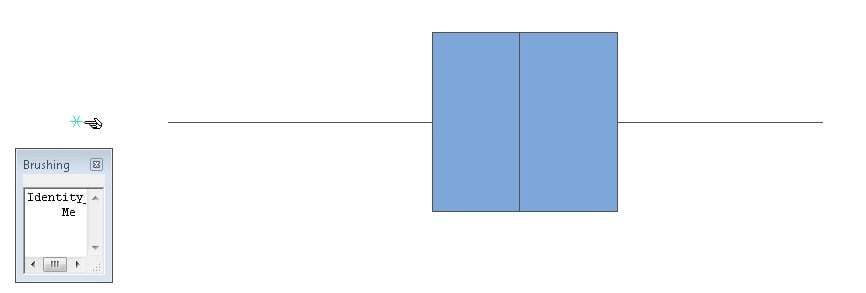
The doctor must have sensed my discomfort.
“It’s not uncommon—even for those from a normal population—to appear as outliers,” he said, doing his best to put a good spin on it.
“For example, based on diagnostic criteria that define an outlier as a value that lies beyond the quartile 1 value minus 1.5 times the inter-quartile range, or beyond the quartile 3 value plus 1.5 the times the inter-quartile range, we’d expect 0.8% of observations to appear as outliers, even when they come from a perfectly normal population.”
I wondered where he’d learned to speak Golic Vulcan so well. Seeing the blank look on my face, he called in the Assistant to explain in clearer, simpler terms.
“For every 1000 observations,” the Assistant said, “roughly 8 are going to be labelled as funny little stars on this chart—even when they’re perfectly normal. In fact, that’s a very conservative estimate.”
“So maybe I’m just like everybody else?” I asked, hopefully.
“I’d like to do some follow-up tests,” the doctor replied, cautiously.
The Results Come In, and I'm Out
It took about 9 seconds, using Minitab Statistical Software, to get my Dixon’s r22 Ratio Test results back. It seemed like forever.
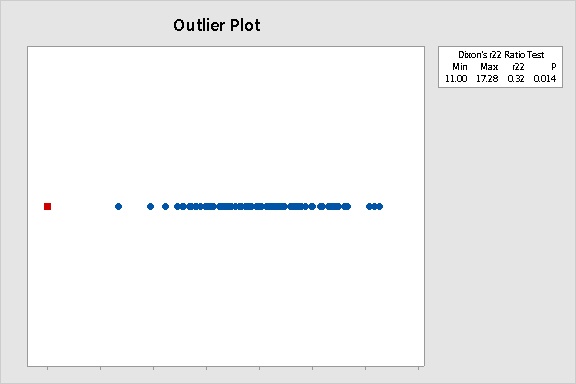
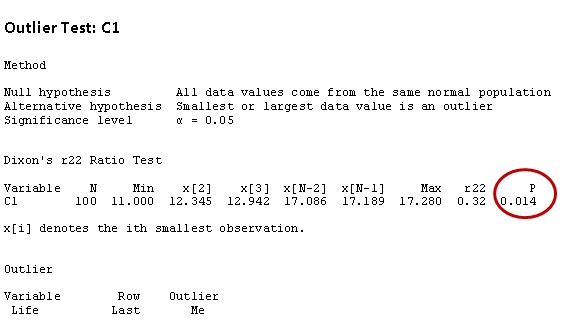
“The p-value for the outlier test is less than the significance level of 0.05,” the doctor began. “So we must reject the null hypothesis that you come from the same normal population as others.“
He paused to take a deep drag on a Lucky Strike that he held between the two thumbs of his left hand. Then he droned on in measured tones, summarizing each and every analysis that seemed to confirm my diagnosis as a delinquent datum.
But I didn’t hear a word he said. I was already a million miles away, wondering how my parents would react.
Mom and Dad Try to Interpret Their Outlier
When my dad saw the individuals chart, he hit the roof.
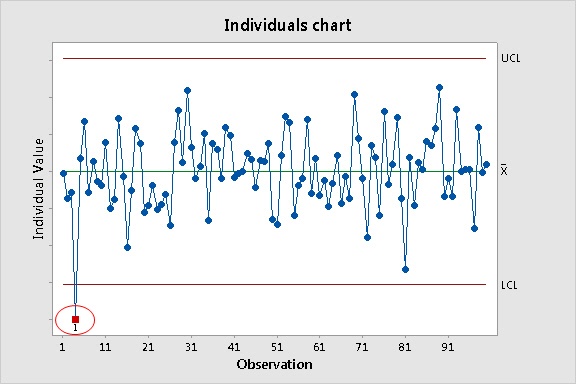
“He’s out of control!!” Dad exploded.
“I’m sure there must be some special cause for it,” my mother reasoned.
“He’s never learned to respect limits,” he said.
“Let’s not overreact, dear. This might be a false alarm.”
“False alarm, huh?” my dad sneered. “Then what about this stem-and-leaf I found in his bedroom?”
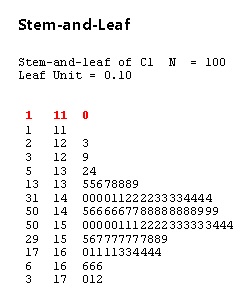
“What were you doing in my bedroom?!” I protested."Did you brush me?"
“Maybe it belongs to one of his friends…” my mother said, with the same vague, speculative tone you’d use to say, “Maybe there’s life on other planets…"
Rebel without a Special Cause
When you treat someone a certain way, they begin living up (or down) to your expectations.
Once the world pegged me as an outlier, my attitude quickly changed. If I was going to be treated as an outcast, by god, I’d be an extreme one. Then they’d find out just how problematic a single, aberrant datum could be!
At first, I started messing with simple parametric statistics, like the mean. They were so sensitive and easy to push around, especially when they weren’t part of a large crowd.
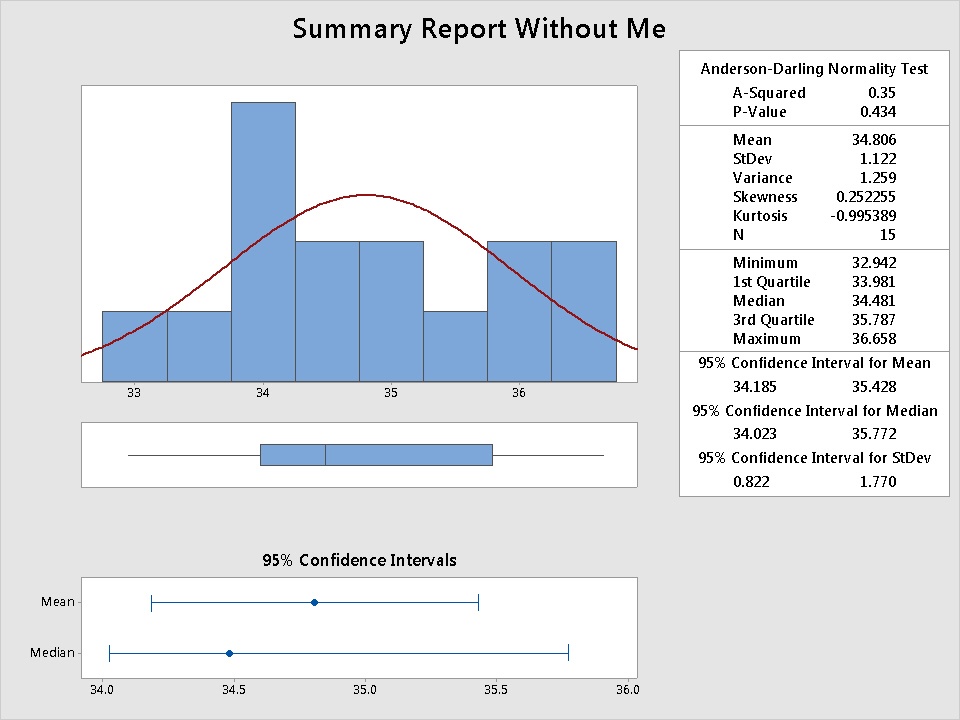
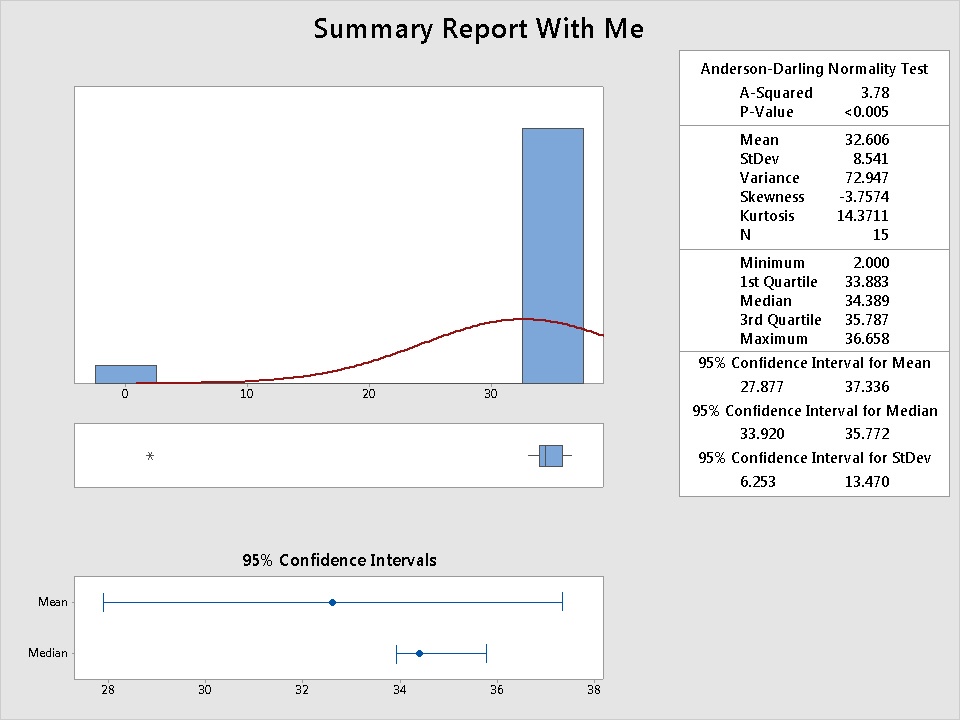
Man, what a power trip! Single-handedly I could drag down an arithmetic average. Or blow a variance sky-high, until it reached over 50 times its original magnitude. Sweet!
See the data huddle fearfully inside a single histogram bin when I’m around? Heh heh heh...they' so afraid they even begin to question their own normality!
As time went on, my insatiable craving for deviation made me move on to bigger things. That's when I started going out at night to wreck models.
I loved to ruin a clean, shiny model and instantly make it a disjointed, insignificant mess.
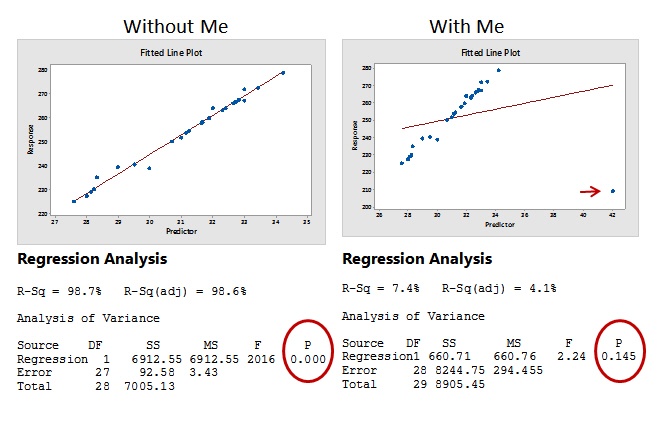
When I was feeling even more insidious, I'd use sleight of hand to make an insignificant relationship appear significant, to the unsuspecting. Little did they know, as soon as I walked away their perfect little model would crumble into a million little unrelated pieces. Ha ha ha!
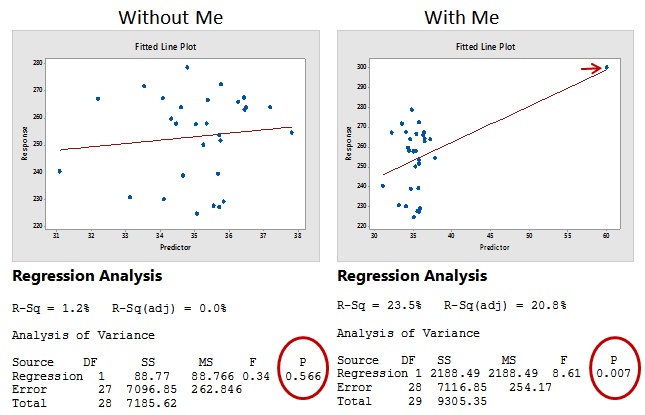
Ah, those were the days. The grand vicissitudes of youth! My pointy, pixelated head was either soaring high in the clouds, or spiraling down to the bottom of a subterranean sinkhole.
Then I got busted.
Remember that Assistant in the doctor's office? The one who could cogently explain the maximum likelihood function to a group of rodeo clowns? Turns out he's also a part-time policeman who conducts routine data checks.
One day he flagged me running a red light. Then the gig was up. My deviance was exposed for all to see.
What To Do with Me?
Once I'd been apprehended and booked, the debate began. How should the world deal with the error of my ways?
Some wished I'd never existed in the first place. They believed I wasn't fit to live with other normal data. I upset the natural balance.
"How simple and peaceful and wonderful the results would be," they argued, "If we could just delete this errant value."
Others argued it was ethically wrong to expunge me. They believed that, with the right transformation, I could be successfully reformed.
To curb my extremist tendencies, some statistical shrinks recommended that I undergo the rigors of a square root or logarithmic transformation. A few even advised shipping me off to the Box-Cox Boarding School for the Delinquent Datum.
"It can work wonders on reforming outliers like your son," the headmaster told my parents.
Yet others felt the reformist approach was just a charade. A sneaky scaling maneuver with smoke and mirrors--one that really didn't change the true nature of my underlying character. They argued against treating me as an aberration.
"There's nothing really wrong with him," they said. "He doesn't need changing. He's just crying out for attention."
These people recognized a simple, basic truth about me.
All I'd ever really wanted, was to be understood.



